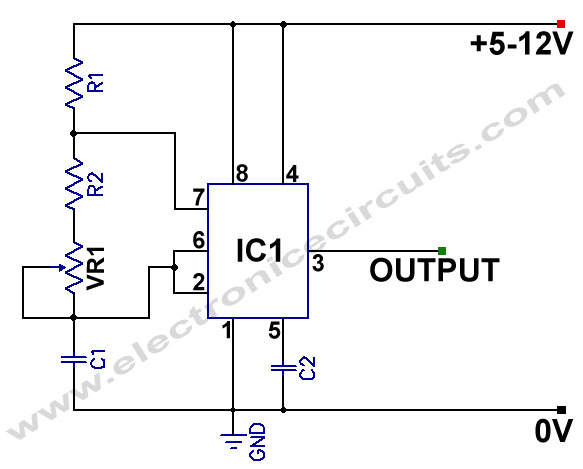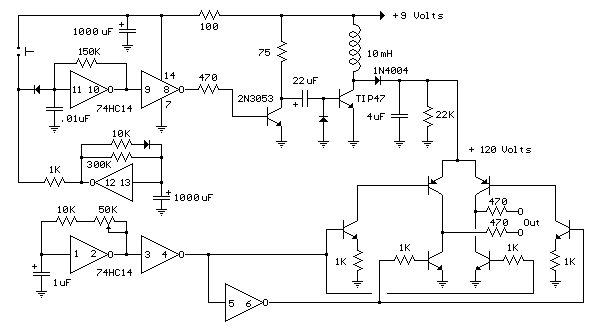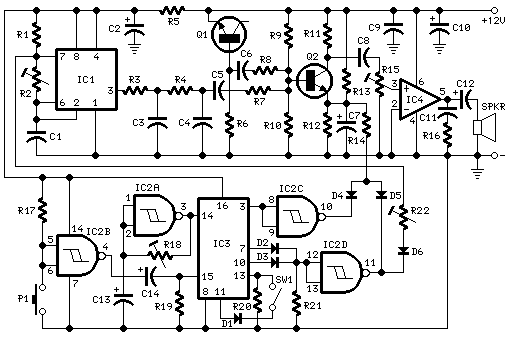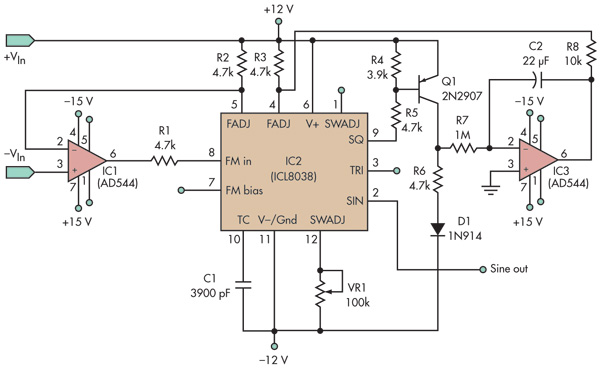
Window Generator

This window generator utilizes a single LM324 operational amplifier and includes two adjustable set points. When the two comparators formed by U1B go high, LED1 illuminates. When U1C goes high, the LED turns off. Hysteresis is implemented using 10 MΩ resistors. As illustrated in Fig. 104-2(b), LED1 can be substituted with an optoisolator for various applications.
The circuit operates as a window comparator, which is designed to provide an output signal when an input voltage falls within a specified range defined by two reference voltages. The LM324 op-amp is configured with two of its four internal comparators (U1B and U1C) to achieve this functionality.
The adjustable set points are established by applying reference voltages to the non-inverting inputs of the comparators. The output of U1B goes high when the input voltage exceeds the upper reference level, activating LED1. Conversely, the output of U1C goes high when the input voltage drops below the lower reference level, resulting in the LED turning off.
Hysteresis is introduced into the circuit through the use of 10 MΩ resistors, which helps prevent oscillations or rapid switching of the output state near the threshold voltages. This stability is crucial in applications where noise may cause the input signal to fluctuate around the set points.
The option to replace LED1 with an optoisolator allows the circuit to interface with other systems while providing electrical isolation. This capability is beneficial in applications where the voltage levels need to be separated or where the output needs to control a higher voltage or current load without direct electrical connection.
Overall, this window generator circuit is versatile and can be adapted for various applications, such as voltage monitoring, overcurrent detection, or as a simple level indicator in electronic systems. This window generator uses a single LM324 op amp and features two adjustable set points. When the two comparators formed b y U1B go high, LED1 lights. When U1C goes high, the LED extinguishes. Some hysteresis is provided by the 10-mi2 resistors. As shown in Fig. 104-2(b), LED1 can be replaced by an optoisolator (etc.) for use in several applications.
The circuit operates as a window comparator, which is designed to provide an output signal when an input voltage falls within a specified range defined by two reference voltages. The LM324 op-amp is configured with two of its four internal comparators (U1B and U1C) to achieve this functionality.
The adjustable set points are established by applying reference voltages to the non-inverting inputs of the comparators. The output of U1B goes high when the input voltage exceeds the upper reference level, activating LED1. Conversely, the output of U1C goes high when the input voltage drops below the lower reference level, resulting in the LED turning off.
Hysteresis is introduced into the circuit through the use of 10 MΩ resistors, which helps prevent oscillations or rapid switching of the output state near the threshold voltages. This stability is crucial in applications where noise may cause the input signal to fluctuate around the set points.
The option to replace LED1 with an optoisolator allows the circuit to interface with other systems while providing electrical isolation. This capability is beneficial in applications where the voltage levels need to be separated or where the output needs to control a higher voltage or current load without direct electrical connection.
Overall, this window generator circuit is versatile and can be adapted for various applications, such as voltage monitoring, overcurrent detection, or as a simple level indicator in electronic systems. This window generator uses a single LM324 op amp and features two adjustable set points. When the two comparators formed b y U1B go high, LED1 lights. When U1C goes high, the LED extinguishes. Some hysteresis is provided by the 10-mi2 resistors. As shown in Fig. 104-2(b), LED1 can be replaced by an optoisolator (etc.) for use in several applications.





